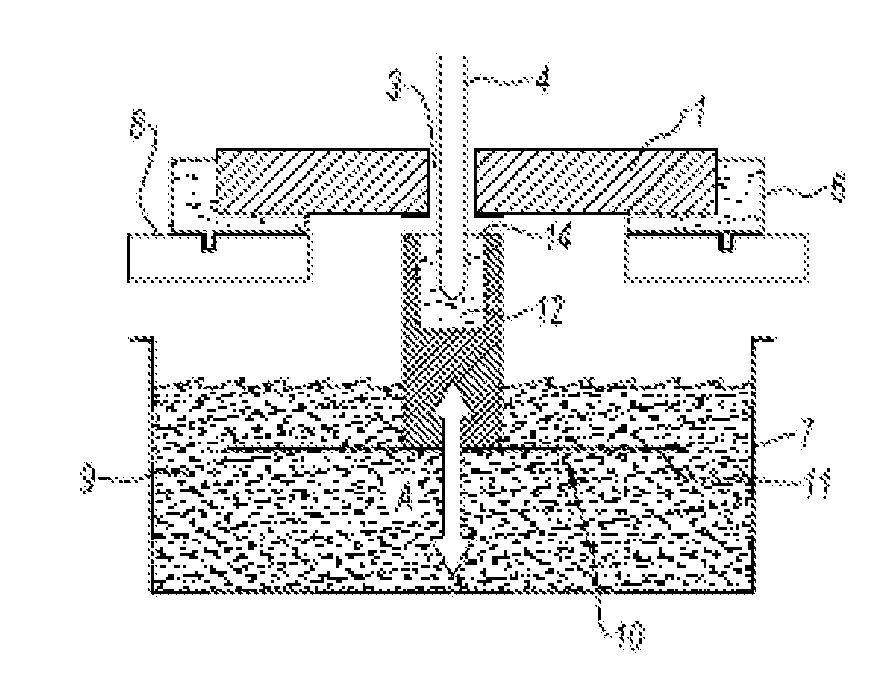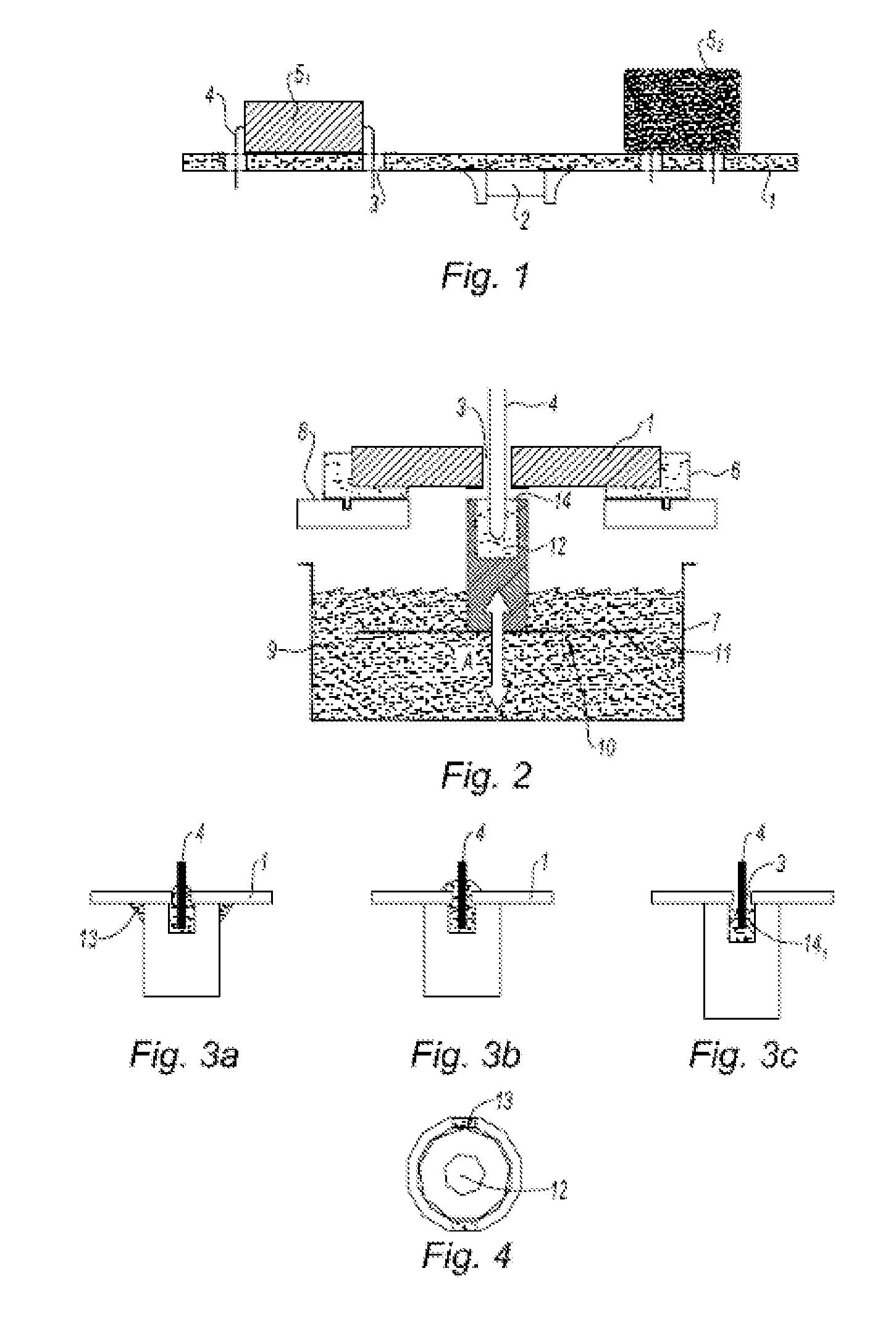Solder pot
a technology of soldering pot and soldering cylinder, which is applied in the direction of soldering apparatus, manufacturing tools, welding/cutting media/materials, etc., can solve the problems of damage to the soldering components, short circuits, and inability to obtain the correct soldering joint, and achieve the effect of increasing the safety of the personnel tasked with implementing the process
- Summary
- Abstract
- Description
- Claims
- Application Information
AI Technical Summary
Benefits of technology
Problems solved by technology
Method used
Image
Examples
Embodiment Construction
[0069]According to FIG. 1, the printed circuit board 1 bears an electronic component 2 already fixed to its top side, and is pierced with plated throughholes holes 3 into which the pins 4 of two components to be soldered 51 and 52, positioned on its top side, are inserted.
[0070]In FIG. 2, the printed circuit board 1 is shown schematically as a single pin 4 and is shown in the soldering position.
[0071]This printed circuit board 1 is placed on a holder 6 and is subjected beforehand to fluxing and preheating steps.
[0072]The soldering zone, which is also shown schematically, consists of a tank 7, closed from above using a specific plate 8 and a cover, the role of which is to keep the tank sealed outside of a soldering cycle.
[0073]The tank 7 is filled with solder 9, consisting of 63% tin and 37% lead, kept at a temperature of about 300° C. to 325° C. under a neutral atmosphere.
[0074]The tank 7 moreover contains a soldering matrix 10 consisting of a supporting plate 11 bearing a set of so...
PUM
| Property | Measurement | Unit |
|---|---|---|
| temperature | aaaaa | aaaaa |
| temperature | aaaaa | aaaaa |
| melting point | aaaaa | aaaaa |
Abstract
Description
Claims
Application Information
 Login to View More
Login to View More - R&D
- Intellectual Property
- Life Sciences
- Materials
- Tech Scout
- Unparalleled Data Quality
- Higher Quality Content
- 60% Fewer Hallucinations
Browse by: Latest US Patents, China's latest patents, Technical Efficacy Thesaurus, Application Domain, Technology Topic, Popular Technical Reports.
© 2025 PatSnap. All rights reserved.Legal|Privacy policy|Modern Slavery Act Transparency Statement|Sitemap|About US| Contact US: help@patsnap.com


